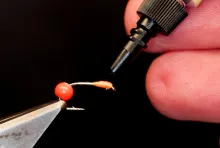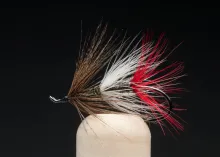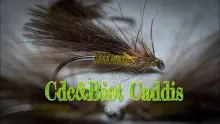Monofilament of many kinds can be used as a fly material as it can be seen in this simple Knot Bug
One thing that fly anglers are not usually short of is monofilament. Various diameters of tippet are essential for making leaders and attaching flies. If you fish one of the variety of methods that don’t use a conventional fly line, you’ll no doubt have an even wider selection in different thicknesses and colours for making nymphing leaders and indicators. All of these can be used to make flies as well as fishing them.
Using fishing line to tie flies is not new, Juan Ramirez’s Kryptonite Caddis is probably the most well-known pattern, with its detached body formed from knotted green monofilament. Other patterns including shrimps and pupa use clear monofilament as a rib to secure a shell back or to emphasise the segmentation of a nymph skin body.
I use coloured Amnesia monofilament for nymph fishing in the winter. I use 12lb or 15lb black as a level leader with 8lb and 12lb green or red for adding indicator sections on the end. The thinner versions can also be deployed to make very effective flies by knotting the mono directly onto a bare hook. I also use colourless tippet tinted with marker pens to tie bugs in more natural colours.
Tying the body of a Knot Bug is simple, there’s no complex weaving procedure involved, all you need to do is to tie a series of overhand knots around a hook until you have the length of body you want. The only thing you need to pay attention to is to reverse the orientation of the knots as you work up the hook.
The trick to getting a nice even body is to pull the knots tight while using the tension on the ends to slide the tightening knot back along the hook. The aim is to have the knot tighten fully just as it comes up against the previous one, that way there will be no gaps between knots nor bumps where a knot sits over the previous one. Like many techniques a couple of practice runs will set you right, and if you have the odd imperfection the fish won’t mark you down for it.
When tying with colourless monofilament follow the same knotting procedure and then colour the body with a marker pen before dubbing the thorax.
Nick Thomas
- Log in to post comments













